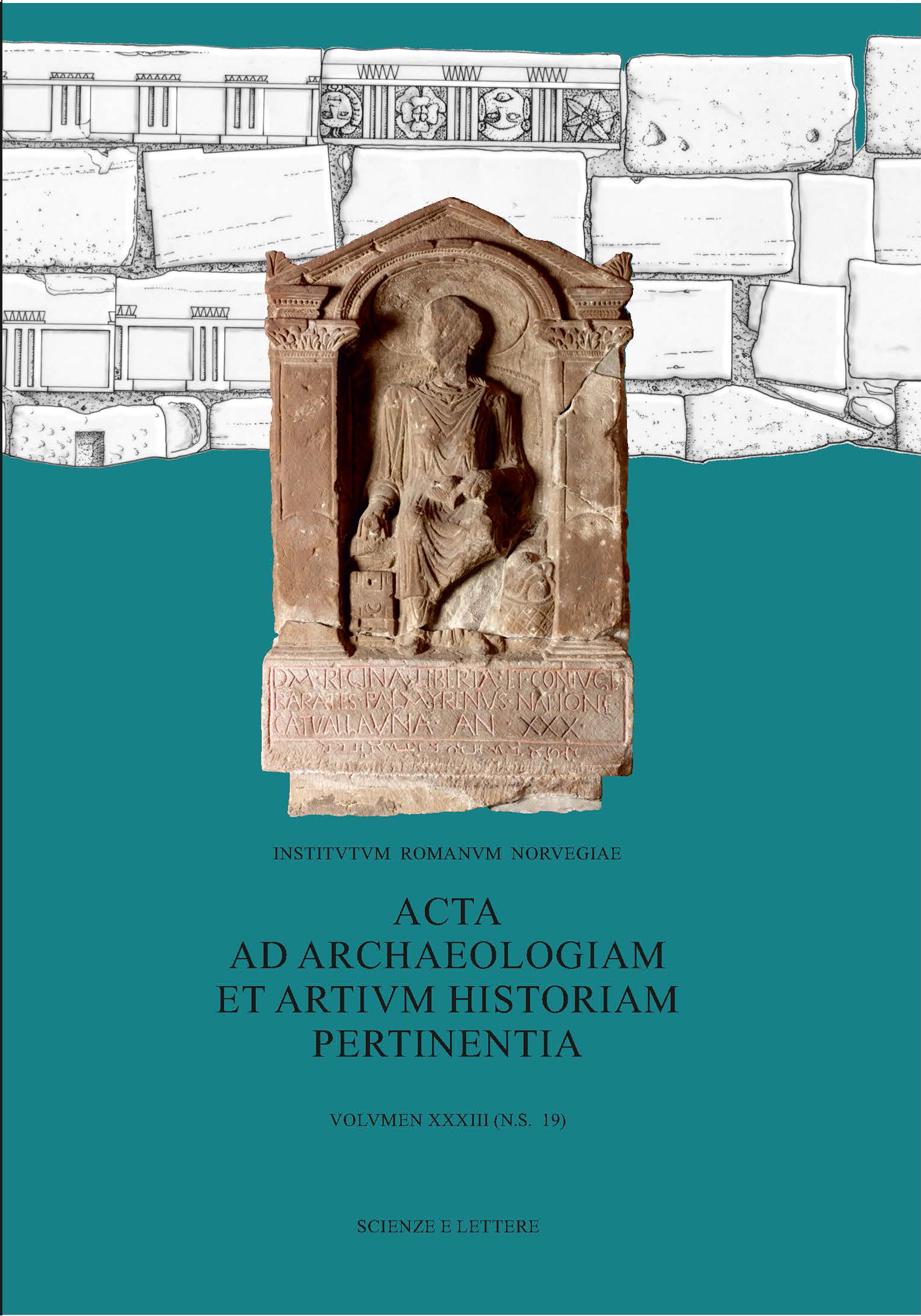Gendered adornment and dress soundscape in Etruscan dance
DOI:
https://doi.org/10.5617/acta.10437Emneord (Nøkkelord):
adornment, gendered adornment, jewellery, ritual performances, dance, identity, Etruscans, sounds, soundscapeSammendrag
The Etruscans produced some of the most refined and elaborate pieces of jewellery in the ancient Mediterranean. While Etruscan jewellery is often interpreted as a sign of luxury, and prestige or as a means of legitimisation, the aim of this article is to show the communicative potential and function of adornment. In particular, what was the aim of such adornment in ritual performances and was there a gendered distinction between the jewellery worn by dancers? Did they have a sensory impact in dance? Based on visual evidence of dance from central Etruria from the sixth and fifth centuries BC, this article will focus on the sound these items could have produced. It appears that belts, bracelets, necklaces, earrings, and diadems added to the male and female body highlighted, shaped, and performed gender, identity, and status; however, they could also blur, transform, and reverse them.
Nedlastinger
Publisert
Hvordan referere
Utgave
Seksjon
Lisens
Opphavsrett 2023 This work is licensed under a Creative Commons Attribution-NonCommercial 4.0 International License.

Dette verket er lisensiert under Creative Commons Attribution-NonCommercial-NoDerivatives 4.0 International License.

This work is licensed under a Creative Commons Attribution-NonCommercial 4.0 International License.
Authors who publish with this journal agree to the following terms:
- Authors retain copyright and grant the journal right of first publication with the work simultaneously licensed under a Creative Commons Attribution License that allows others to share the work with an acknowledgment of the work's authorship and initial publication in this journal.
- Authors are able to enter into separate, additional contractual arrangements for the non-exclusive distribution of the journal's published version of the work (e.g., post it to an institutional repository or publish it in a book), with an acknowledgement of its initial publication in this journal.
- Authors are permitted and encouraged to post their work online (e.g., in institutional repositories or on their website) prior to and during the submission process, as it can lead to productive exchanges, as well as earlier and greater citation of published work (See The Effect of Open Access).





